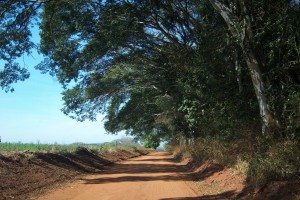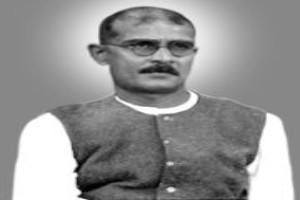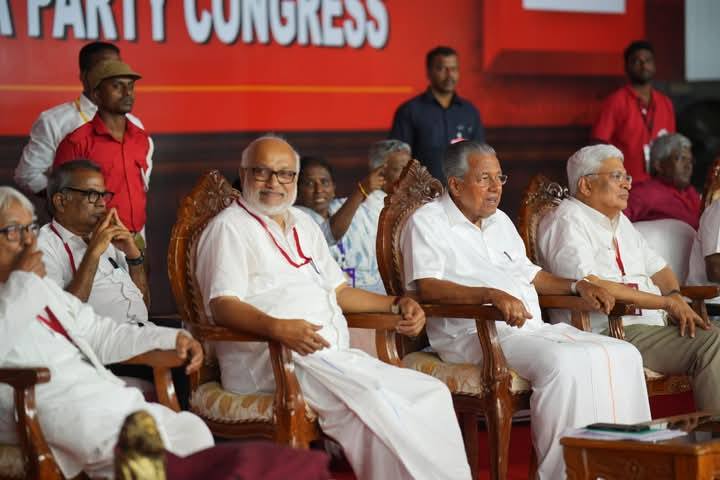
 By Mahadev H. Desai*
By Mahadev H. Desai*
The Last Clod
Nearly thirty-five years ago, Sir Daniel Hamilton acquired on a nominal lease from the Bengal Government about 2,000 acres of dense jungle in three or four of the countless islands of the Sunderbans intersected by wide channels and tiny creeks, uninhabited except by a stray hunter going there occasionally and apparently uninhabitable, with its wildlife and rank vegetation and salt-impregnated soil. Not that he was a pioneer in the adventure. There were Zamindars before him who had toiled and reclaimed the land; perhaps even before them a few of these islands had been reclaimed by the Bengal villagers, who ventured out to these parts in their fishing boats, and already the businessman had found this land-reclamation a financially sound proposition. But Sir Daniel went there as a God-fearing businessman. As we have seen, he had his high ideals to serve along with doing sound business, and he went there with an abounding faith in man rather than in money.
Also read: History Recalled: Towards an ideal zamindari -2
Little by little he reclaimed the land and induced peasants form the densely populated neighbouring districts to go and settle in these parts. The work of reclamation and building a strong earthen dyke to keep out the saline waters has gone on all these years, and the 130 miles long dyke was actually completed on the 7th of February (1935), when I was invited to witness the laying of the last clod by Lady Hamilton and the sawing of the last tree by Sir Daniel. As though to show us that the ancient denizen of these jungles was not yet extinct, a few hours before this ceremony a boat came alone to the Estate laden with the rich prize of a beautiful Royal Bengal tiger shot overnight by the villagers, who had already paid a heavy toll to him in the shape of cows and bullocks that he had killed and carried away. “Are you a good shikari?” I asked Sir Daniel, and he said: “Shooting of birds and innocent animals had never appealed to me. The first and the last thing I shot was a bird over sixty years ago when I was but a boy, but I do not mind shooting tigers and crocodiles.” The tigers have been killed for him by the peasants he has settled on his Zamindari, but he has been merciless to the Mahajan and the money-lender, whom he has hunted out as something even more dangerous than the tiger.
There was something sacred about the last public act jointly performed by Sir Daniel and Lady Hamilton. There was rejoicing in their hearts, but more than that, there was thanksgiving, for it had pleased God to bring the work they had jointly begun thirty five years ago to fruition. There had been years in between when Sir Daniel, with shattered health, had despaired of the task ever being finished, but the last clod had been laid and the last tree sawn, and the happy couple have gone home with a determination to come back to start the work that still remains to be done. “The return we value most is not the return in money,” Sir Daniel said in the course of his speech at the ceremony, “but the dividend in life which it has yielded to 10,000 people. After all is said and done, values should be measured in life rather than by money.” There is a rich vein of idealism in this practical Scotchman, and his simple and proud heart thought of the crest of the Hamilton clan, which is a tree being sawn right through. ‘Through’ is also their motto, and Sir Daniel said it indicated “that, when a Hamilton takes on a job, he is expected to go through with it, as we have done today.”
And, indeed, the proud couple has been through a tough job. In the early years of the settlement there was an outbreak of cholera. The doctors fought shy of their task and dispensed medicines from their dispensaries. Sir Daniel returned from home in these none too inviting surroundings, went from cottage to cottage with medicines and words of good cheer, examining and handling the patients himself. That was what led him to have a number of doctors for the colony and dispensaries easily accessible to all.
The determination to root out the Mahajan led him to get into touch with the co-operative department and cover the twenty five villages with a network of co-operative societies and primary schools. Where they started over thirty years ago with nine hundred day labourers imported from outside to clear the jungle and to dig tanks to collect fresh water in, there is now a prosperous peasantry with their own homes and fields and garden plots, with their co-operative credit societies and store and schools and dispensaries. I propose to analyse these concrete results in detail in the next article. But let me say that there is time yet before Sir Daniel and Lady Hamilton may declare that they have been through with their job. The actual physical job has been achieved, but there is still to be done the greater and the nobler task of enriching and broadening the people’s minds and enlightening their souls.
Sir Daniel has written a number of essays on an ideal co-operative state and has in the course of them harked back, with the fondness of an Indian, to the days of Ramayana and Mahabharata and Asoka. I do not know that he or many of us will live to see that state. But may he live long enough to achieve the far more modest task of building up an ideal Zamindari and be a beacon light to other Zamindars! Gosaba, as we shall see, is far yet from that ideal. When that ideal is reached, we shall rejoice with him even more and witness with delight Lady Hamilton singing their favourite Burns’ song, ‘John Anderson, my Jo,’ and Sir Daniel playing on the bamboo flute he loves so much:
John Anderson, my Jo, John,
When we were first acquent,
Your locks were like the raven
Your bonnie brow was brent;
But now your brow is beld, John,
Your locks are like the snaw;
But blessings on your frosty pow
John Anderson, my Jo.
John Anderson, my Jo, John.
We clamb the hill thegither
And many a canty day, John
We’ve had wi’ane anither
Now we maun totter down, John,
But hand in hand we’ll go;
And sleep thegither at the foot
John Anderson, my Jo.
– to be continued
*Mahadev Desai was an eminent freedom fighter and Mahatma Gandhi’s personal secretary; article courtesy his grandson, Nachiketa Desai.






Thanks for your write-up on this weblog. From my own experience, periodically softening up a photograph could possibly provide the professional photographer with a bit of an artistic flare.